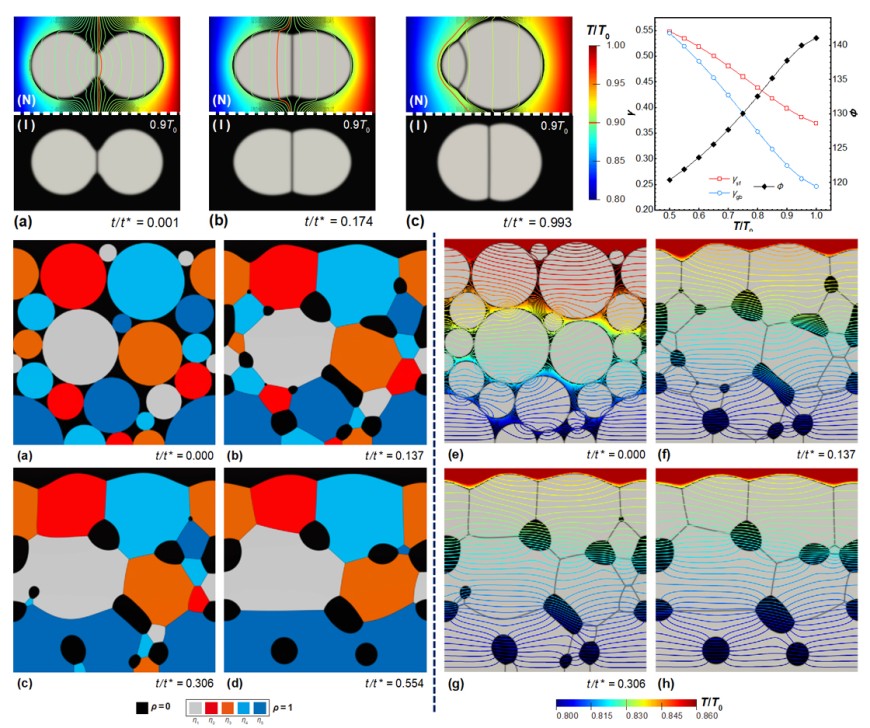Phase-field modeling of non-isothermal grain coalescence in the unconventional sintering techniques
Upcoming Work
2019/04/29

Authors: Yangyiwei Yang, Min Yi, Bai-Xiang Xu and Long-Qing Chen
A thermodynamically consistent phase-field model is developed to study the non-isothermal grain coalescence during the sintering process, with a potential application to the simulation in unconventional sintering techniques, e.g. spark plasma sintering, field-assisted sintering, and selective laser sintering, where nonequilibrium and high temperature gradient exist. In the model, order parameters are adopted to represent the bulk and atmosphere/pore region, as well as the crystallographic orientations. Based on the entropy analysis, the temperature-dependent free energy density is developed, which includes contributions from the internal energy (induced by the change of temperature and order parameters) and the order parameter related configurational entropy. The temperature-dependent model parameters are determined by using the experimental data of surface and grain boundary energies and interface width. From laws of thermodynamics, the kinetics for the order parameters and the order-parameter-coupled heat transfer are derived. The model is numerically implemented by the finite element method. Grain coalescence from two identical particles shows that non-isothermal condition leads to the unsymmetric morphology and curved grain boundary due to the gradients of on-site surface and grain-boundary energies induced by the local temperature inhomogeneity. More simulations on the non-isothermal grain coalescence from two non-identical and multiple particles present the temporal evolution of grain shrinkage/growth, neck growth, and porosity, demonstrating the capability and versatility of the model. It is anticipated that the work could provide a contribution to the research community of unconventional sintering techniques that can be used to model the non-isothermal related microstructural features.



